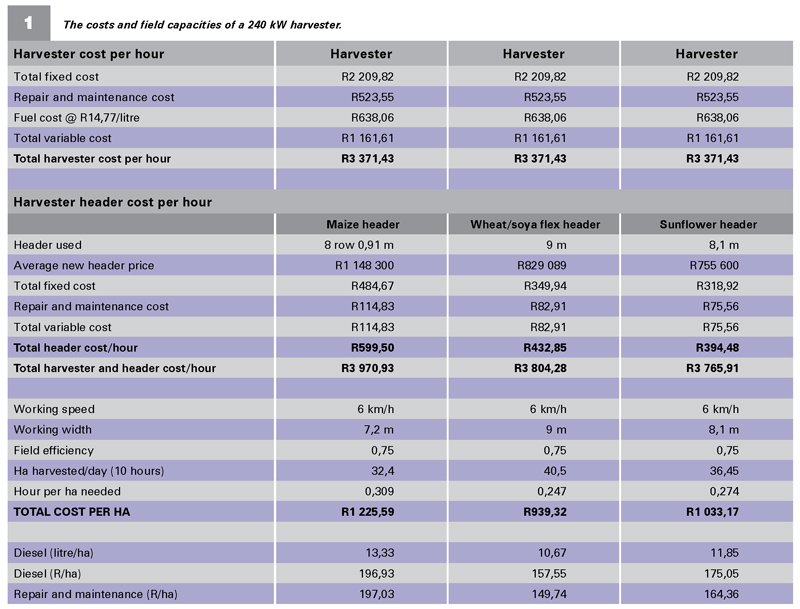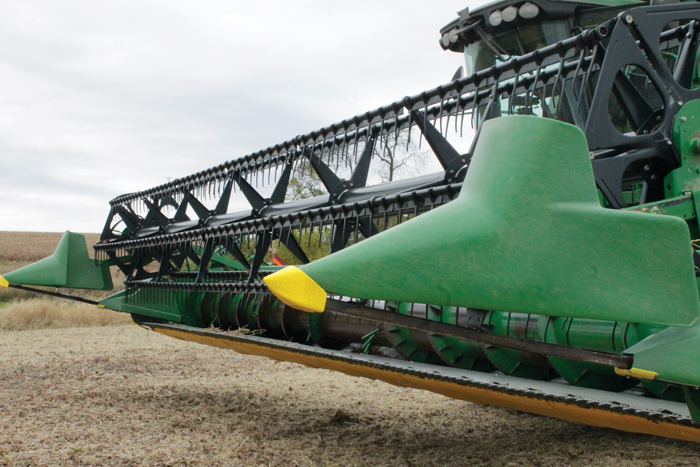January 2022
| PIETMAN BOTHA, INDEPENDENT AGRI- CULTURAL CONSULTANT |
 |
To increase profit and reduce risk, consider harvesting soybeans earlier. The cultivation of soybeans is known for its risks. One of the biggest risks is during the time and process of harvesting. Shatter losses due to brittle pods increase as moisture levels of pots and grain drops. For this reason, timely harvest is important.
Plant growth and not only losses due to the brittle pods contribute to losses. Some plants and cultivars are known to produce its pods very low on the ground and if the harvester table cannot harvest low enough there are many soybeans left behind. Therefore, it is important to plant the correct cultivar and use the correct harvester header.
REACHING PODS LOW ON THE GROUND
Producers can easily overestimate the capacity of the harvesters, with the result that a large portion of the crop is lost. Harvesting close enough to the ground is easier said than done. Large stones in a field and very uneven fields can cause expensive damage to a harvester. Make sure that your harvester is insured for stone damage.
Low-growing and low-podded crops such as soybeans present its own challenges at harvesting, but with flex header or flexi draper on the front of your harvester you’ll have the best tool for the task. The flexi header will be able to follow the soil contours. Some headers are floating, multi-section flexible headers with split reels. This allows the entire header frame, cutter bar and reel to follow ground contours as a unit, flexing up to 245 mm on either end while maintaining a close reel-to-cutter bar relationship.
A flexi draper header is called a draper due to the draper ‘belts’ that carry the crop to the feeder house. Thus, the feed is so much smoother and it allows farmers to cut a little later at night due to the even feeding. The belt is also known to reduce soybean loss as the soya plant is handled gently and the seeds don’t get lost before the harvester.
At the end of the year the soybean profit will determine a producer’s bank balance. Producers must calculate what the cost of the different headers are, and what the loss of the beans must be before it make sense to buy the more expensive headers.
TIMING IS IMPORTANT
Unfortunately soybean harvesting is not easy. The time of day that a producer starts to harvest is critical. Since soybean plants absorb the moisture from the dew it gets sticky and loses its brittleness. This makes it difficult for the harvester to harvest. The harvester’s cutter bar can easily break in the morning. Later in the evenings the same occurs but the plants will typically get stuck around the threshing drum. The moisture will therefore reduce the harvesting time per day which will have an effect on how many hectares can be harvested per day.
In a year where the input cost is very high, producers will try to plant extra soybeans. The larger crop will require extra harvesters which will have an effect on the availability of contractors.
A rule of thumb is that a harvester with a 9-meter header will over time harvest between 20 ha and 42 ha per day. Don’t expect more per day. In order to harvest on time a producer needs 1,5 eight row harvesters to keep up with one eight row planter. Surplus harvester capacity will help to increase soybean profitability.
Producers should plant more than one growing length cultivar. This will extend the harvesting time and one can get away with less harvester capacity.
HARVESTING COSTS
Harvesting a crop is an expensive action. Table 1 shows the costs of maize, soybeans and sunflower harvesting using a 240 kW harvester which costs R5 235 496 and can harvest maize, wheat, soybeans and sunflower.
 At a speed of 6 km/h 32 ha of maize, 40 ha of wheat or soybeans and 36 ha sunflower can be harvested. As soon as the hours per day is decreased, the hectares are also less. In the case of soybeans, harvesting ten hours per day is a challenge, so do your calculations accordingly.
At a speed of 6 km/h 32 ha of maize, 40 ha of wheat or soybeans and 36 ha sunflower can be harvested. As soon as the hours per day is decreased, the hectares are also less. In the case of soybeans, harvesting ten hours per day is a challenge, so do your calculations accordingly.
To be able to harvest ten hours per day, repair and maintenance as well as services must be done according to the specifications provided by the manufacturer. Read the manuals and stick to it. If something breaks (and it will) make sure that the most likely spares are available. Prevention is better than down time especially in soybean harvesting. Service the equipment before the harvesting starts – it will save time.

Publication: January 2022
Section: Pula/Imvula